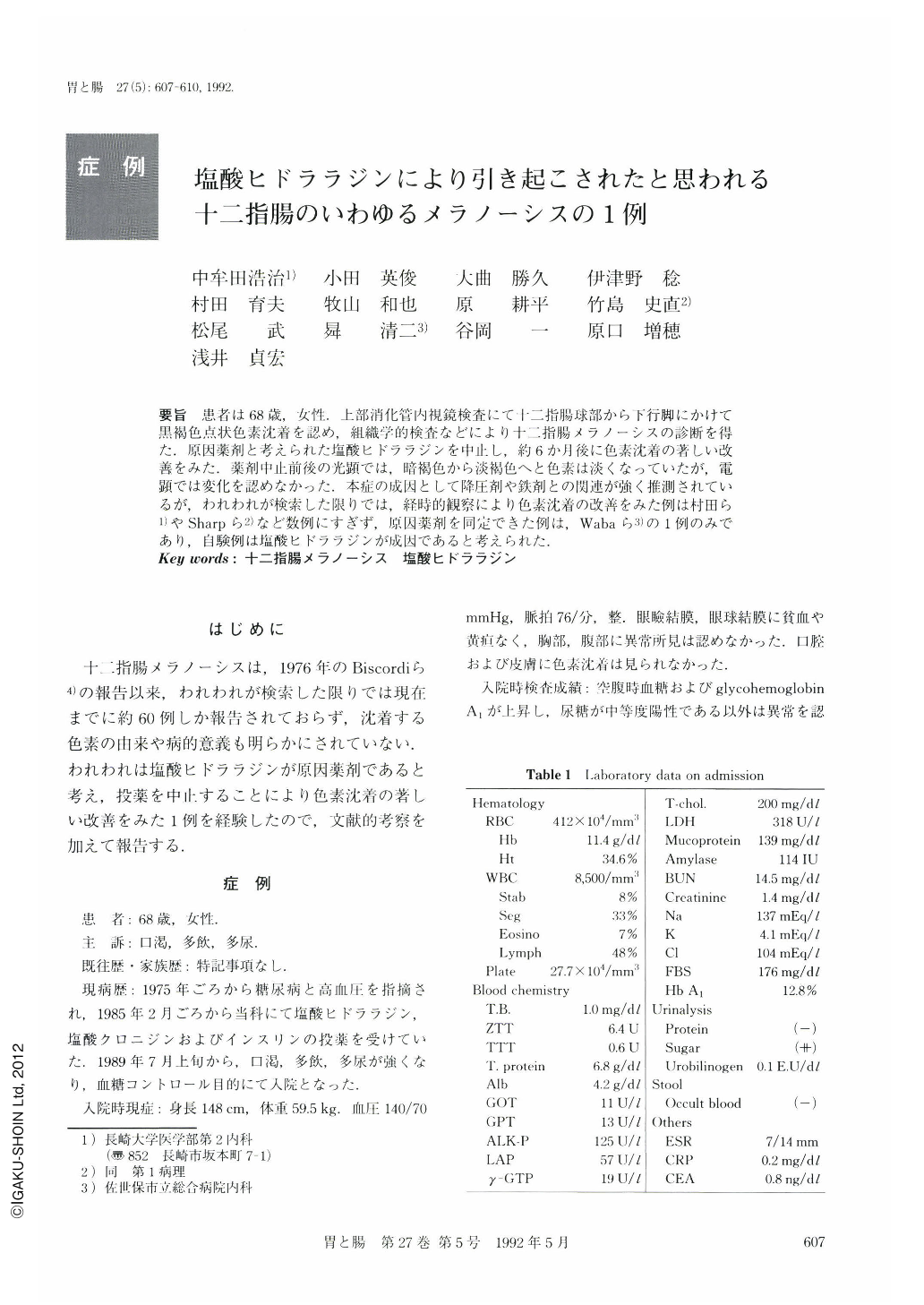Japanese
English
- 有料閲覧
- Abstract 文献概要
- 1ページ目 Look Inside
要旨 患者は68歳,女性.上部消化管内視鏡検査にて十二指腸球部から下行脚にかけて黒褐色点状色素沈着を認め,組織学的検査などにより十二指腸メラノーシスの診断を得た.原因薬剤と考えられた塩酸ヒドララジンを中止し,約6か月後に色素沈着の著しい改善をみた.薬剤中止前後の光顕では,暗褐色から淡褐色へと色素は淡くなっていたが,電顕では変化を認めなかった.本症の成因として降圧剤や鉄剤との関連が強く推測されているが,われわれが検索した限りでは,経時的観察により也素沈着の改善をみた例は村田ら1)やSharpら2)など数例にすぎず,原因薬剤を同定できた例は,Wabaら3)の1例のみであり,自験例は塩酸ヒドララジンが成因であると考えられた.
A 68-year-old woman was admitted for treatment of diabetes mellitus. She had been treated with hydralazine, clonidine and insulin for several years. At screening, upper gastrointestinal endoscopy revealed a pattern of diffuse black-brown pigmentation in the first and second portions of the duodenum (Fig. 1, 2). Histologic examination of duodenal mucosal biopsies showed black-brown pigments in the lamina propria within macrophages (Fig. 3). Using an electron microscope, granules with variable electron density and shape were found within the lysosomes of the macrophages (Fig. 4). Thus, a diagnosis of duodenal melanosis was made. We discontinued the administration of hydralazine on the assumption that it was the causative agent for the pigmentation. Endoscopic examination six months later showed that the pigmentation in the duodenum had almost disappeared (Fig. 5), The occurrence of duodenal melanosis is rare, and it is assumed that antihypertensive and iron drugs are responsible for this condition. We describe a case of duodenal melanosis induced by hydralazine and present a review of the literature.

Copyright © 1992, Igaku-Shoin Ltd. All rights reserved.


